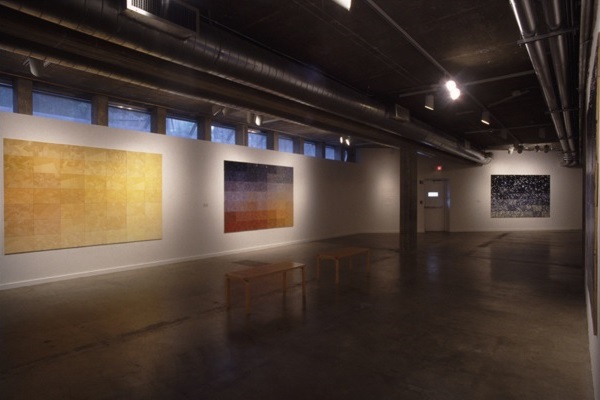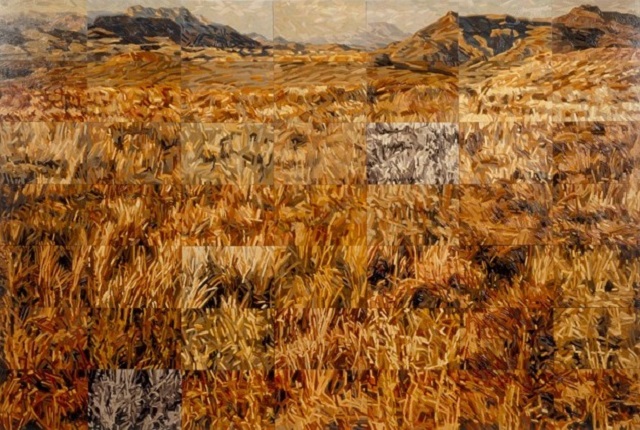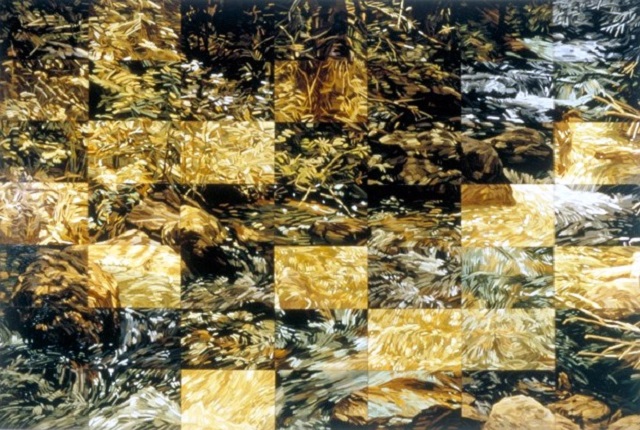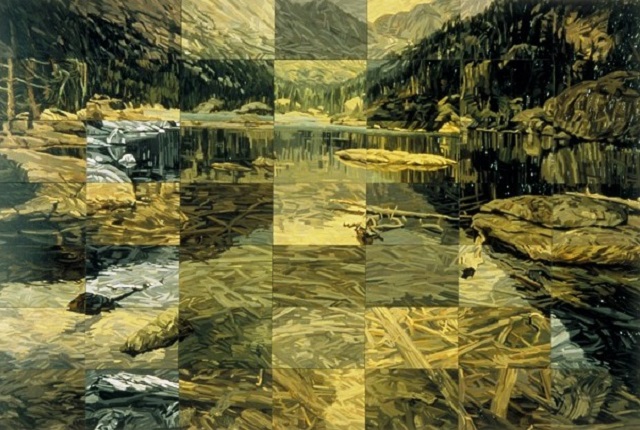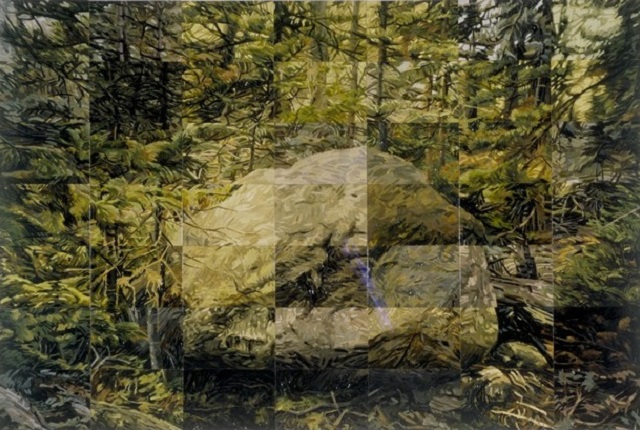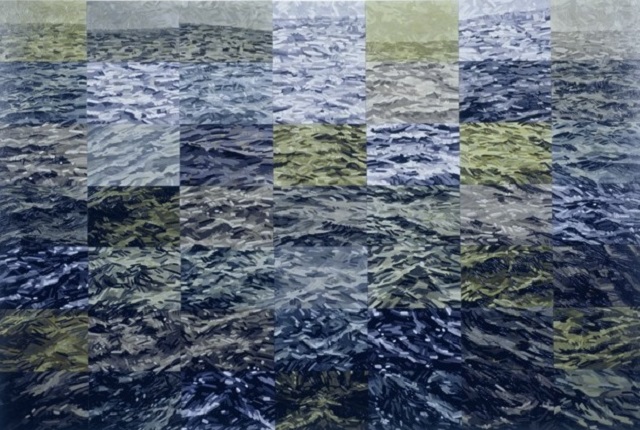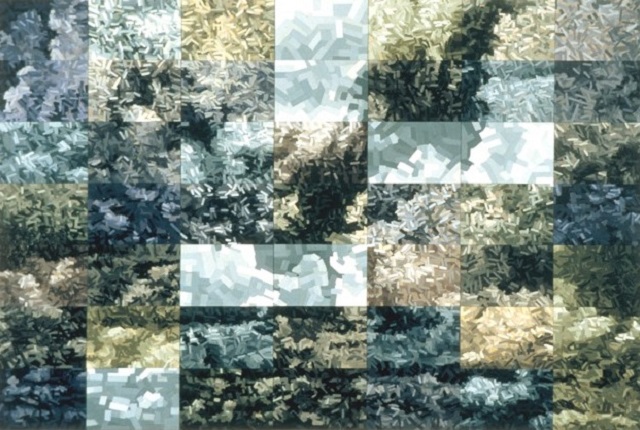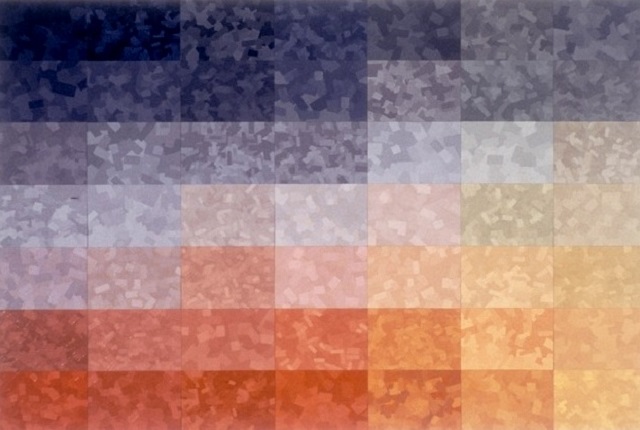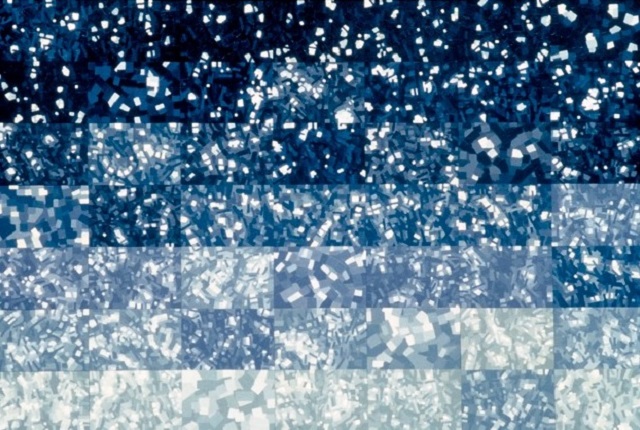Where Time Dwells
Contemporary Arts Museum
Houston, TX, 2000
During my hiking experiences I became aware that each trail had unique visual themes such as an abundance of boulders, a stream or a lake. Rather than having a goal at the beginning of the trail, I focused on discovering visual themes along the trail. I began taking several small analog point and shoot cameras on each hike so that I could capture one theme per camera. By using small cameras I was not slowed down by equipment and the lens of the camera became a looking device, a visual prosthetic impelling me to search further, longer and take more risks in order to capture the next image. These photos were my visual diaries and I created a card catalog filing system in my studio of 4 x 6 inch photos that were organized under thematic subject such as “stream”, “cloud”, “forest”, rather than site location. I began to describe the paintings from these photographs as the visual vocabulary of landscape and to name each painting Cloud, Stream, Boulder, etc.
Through the relationships of hiking through an outdoor environment, the reduction of that visual experience into a photograph, and the further reduction of that image into a painting, I explored the irreconcilabilities between my experience (continuous, analogue code) and a workable vocabulary in painting (discontinuous code). It is a fundamental struggle in my work. How does one formalize a vocabulary of something that cannot be so reduced? How does one record the sky, a canyon or a boulder?
Where Time Dwells was an exhibition of the paintings from the visual vocabulary of landscape. Each painting, 5’10” x 8’11”, is divided into a 49 panel grid. As the viewer moves from one panel to the next colors change, images blur then refocus. Individual panels are treated as contained worlds. My experience in nature becomes a source of multifarious encounters with my imagination in the studio. The format refers to change from day to day in my studio, cinematic change, abundance of information, change of season, rotation of the earth and movement of solar systems. The grid represents the idea of latitude and longitude and the sense of knowing where we are on the earth. It refers to the mosaics of satellite and shuttle photography and the geometry of form.
In a sense I have lost the landscape experience in the studio so I compose elaborate systems to remember the acute relationship to scale, distance and time that the land offered. The interaction with the two dimensional surface is as intensely experienced as the three dimensional physical interaction with the land.


